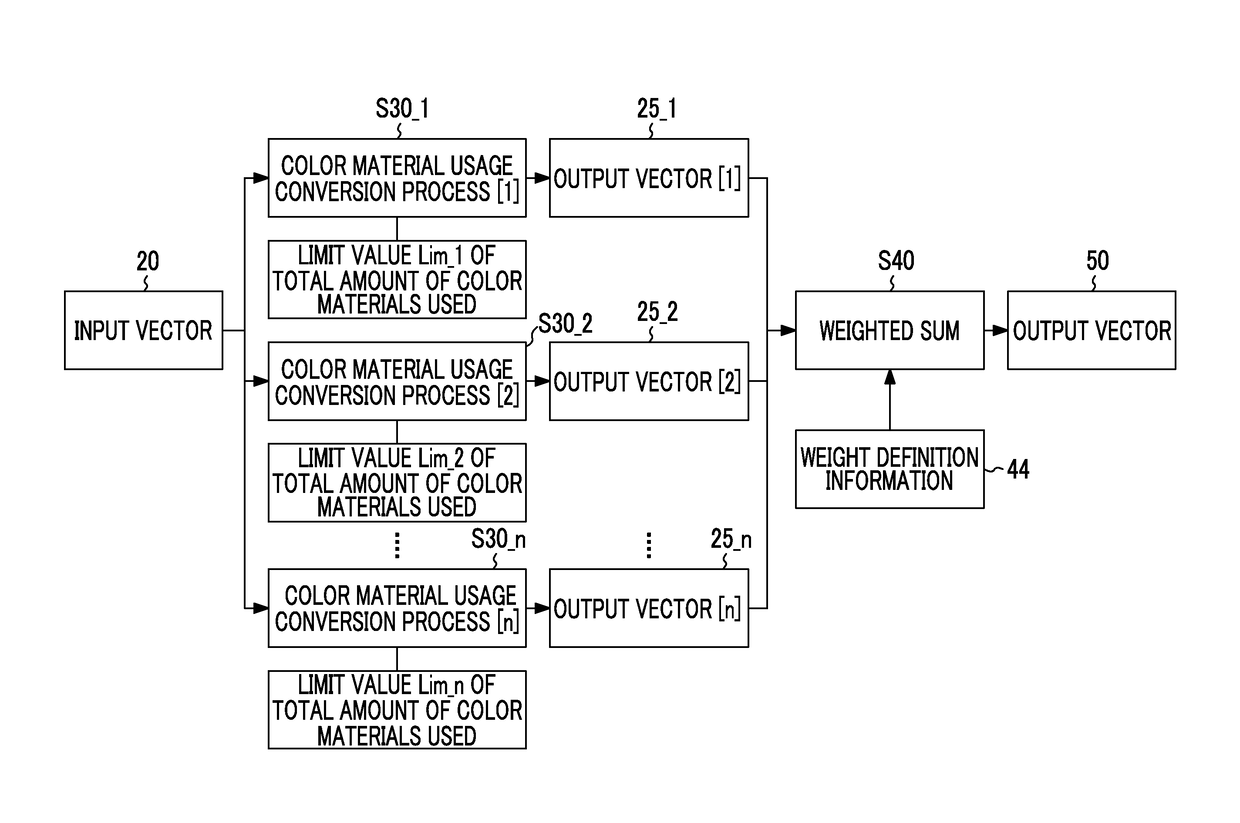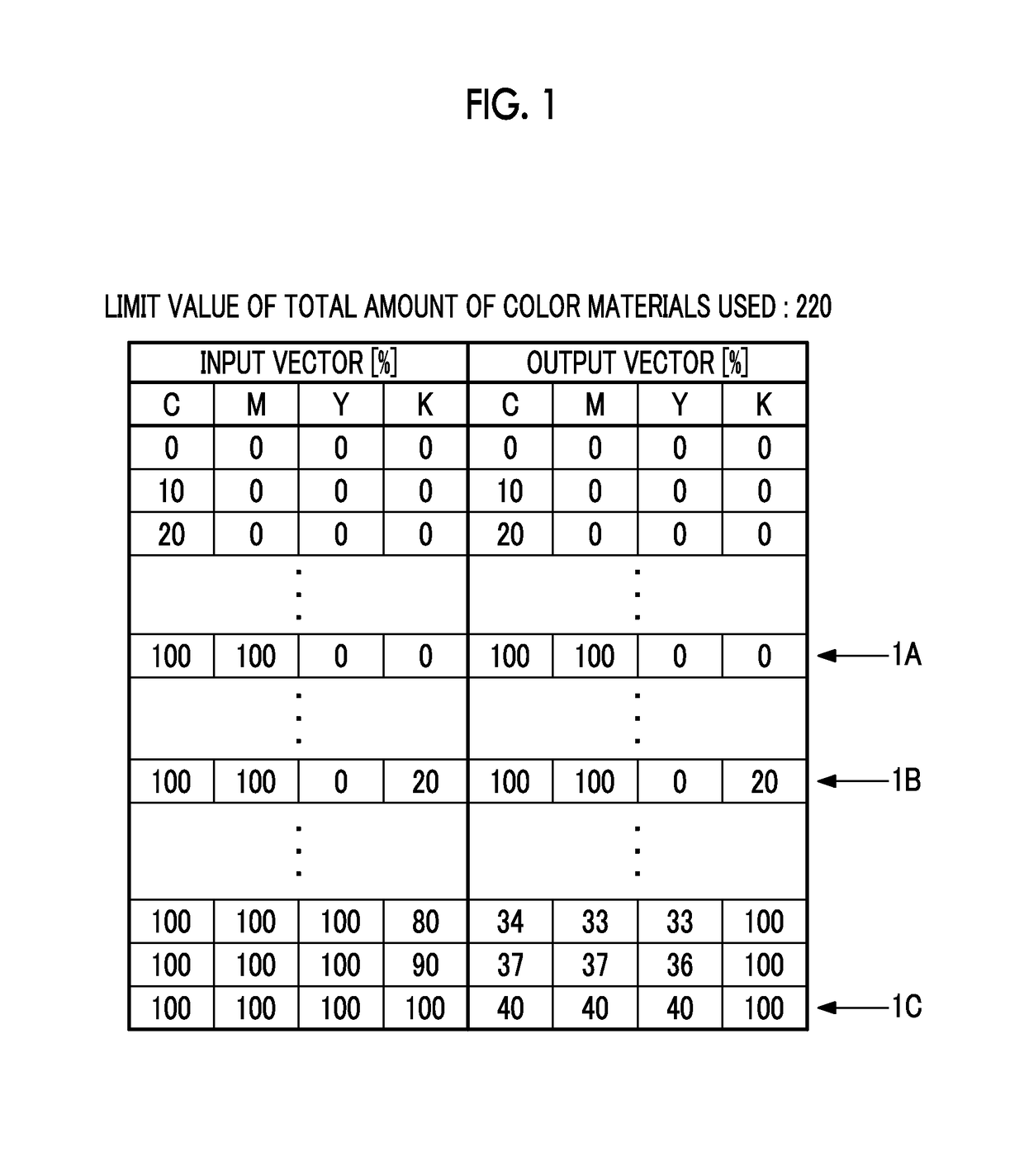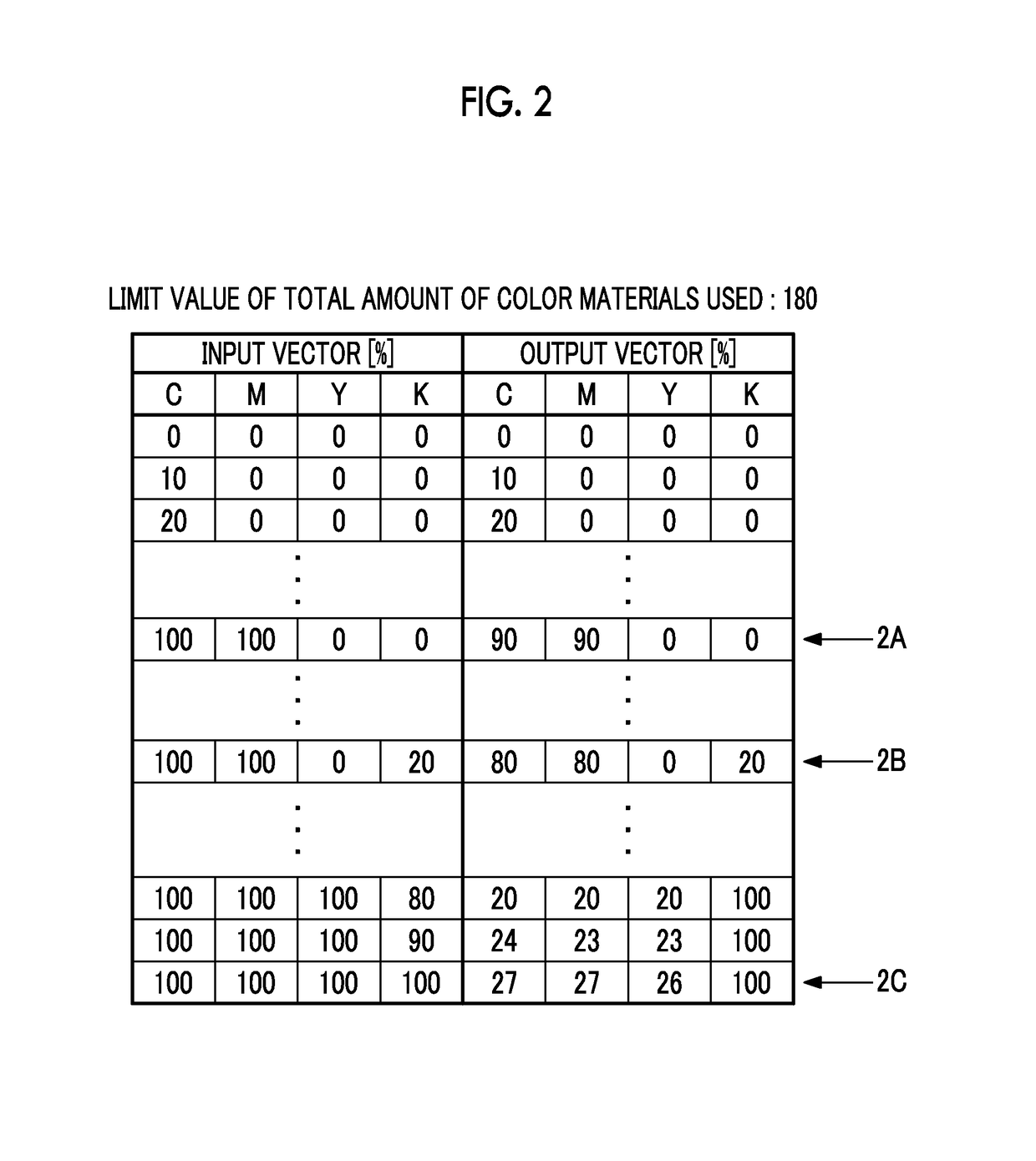Signal conversion method and apparatus, program, and print system
a technology of signal conversion and printing system, applied in the direction of digital output to print units, visual presentation using printers, instruments, etc., can solve the problems of excessive narrowing of color reproduction gamut and deterioration of film characteristics, so as to prevent excessive narrowing of color reproduction gamut and avoid print failure
- Summary
- Abstract
- Description
- Claims
- Application Information
AI Technical Summary
Benefits of technology
Problems solved by technology
Method used
Image
Examples
Embodiment Construction
[0061]Hereinafter, embodiments of the invention will be described in detail with reference to the accompanying drawings.
[0062]
[0063]First, the definition of terminology (terms and symbols) used in this embodiment will be described.
[0064](1-1) For “Color Material”
[0065]This embodiment is applied to a print system which uses four types of color material, such as cyan (C), magenta (M), yellow (Y), and black (K). However, the type of print system is not limited thereto. The invention may be applied to any type of print system or any printing method as long as the print system or the printing method uses a plurality of (two or more types of) color materials. The print system includes, for example, an offset printing machine, an electrophotographic printer, and an ink jet printer. The color material may be ink or toner according to the type of print system.
[0066]In addition, the invention is not limited to the structure using four types of color materials, such as C, M, Y, and K. Various ...
PUM
 Login to View More
Login to View More Abstract
Description
Claims
Application Information
 Login to View More
Login to View More - R&D
- Intellectual Property
- Life Sciences
- Materials
- Tech Scout
- Unparalleled Data Quality
- Higher Quality Content
- 60% Fewer Hallucinations
Browse by: Latest US Patents, China's latest patents, Technical Efficacy Thesaurus, Application Domain, Technology Topic, Popular Technical Reports.
© 2025 PatSnap. All rights reserved.Legal|Privacy policy|Modern Slavery Act Transparency Statement|Sitemap|About US| Contact US: help@patsnap.com



